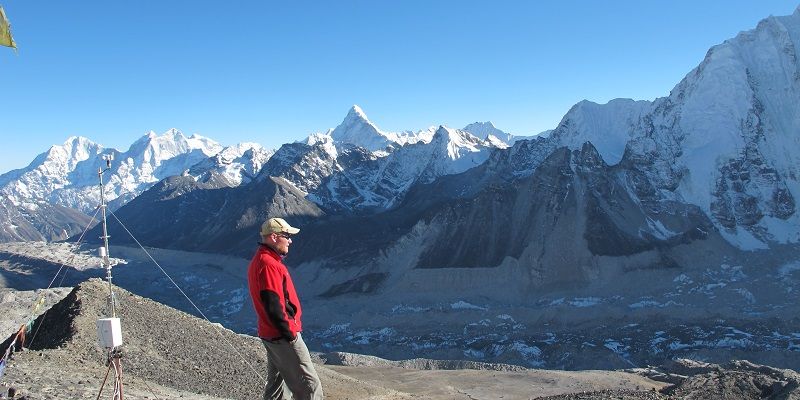
Climate change scientists are heading to the Himalayas in a bid to become the first to successfully drill through the world’s highest glacier.
An international research team will spend up to six weeks working at an altitude of more than 5,000 metres on the Khumbu glacier in Nepal and will be using a specially adapted car wash unit to drill up to 200 metres into the ice.
Once the drilling has been completed, the team, led by Dr Duncan Quincey from the University of Leeds, will be able to study the glacier’s internal structure, measure its temperature, how quickly it flows and how water drains through it.
Dr Quincey, a geomorphologist in the School of Geography, will be working at the drill site as well as overseeing the remote sensing – or satellite imagery – of the project. He said: “All the current data collected on these glaciers only just scratches the surface.
“The data we will collect during this expedition is critical for us to be able to forecast how this glacier, as well as others in the region, will respond to climate change.”
Glacier meltwater from across the Himalayan range supports the livelihoods of around 40% of the world’s population. However, dams and lakes that form on the glacier present a significant risk of flash flooding for people living down-stream.
Professor Bryn Hubbard from Aberystwyth University, who has deployed the drilling system around the world said: “Understanding what actually happens inside these glaciers is critical to developing a better understanding of how they flow so that we can better predict when dams that form on these glaciers are likely to be breached, releasing vast volumes of water to the valleys below.
“This is a real risk in the Himalayas as it is in other regions such as the Andes, and has the potential to endanger the lives of thousands of people.”
Located in north-eastern Nepal, the 17km-long Khumbu glacier is often used by climbers on their way to Everest base-camp and flows from an altitude of 7,600 metres.
Technical challenges
The team will be working at an altitude of over 5,000 metres and will have to contend with a number of physical and technical challenges.
Equipment weighing approximately 1,500kg will need to be transported to the drill site on the glacier.
Half the equipment will be airlifted by helicopter and half will be carried up by locally-hired Sherpa, yaks and the research team.
At sea level, helicopters would typically be able to lift over a tonne at a time. But due to the high altitude of the Khumbu glacier, the payload for this expedition is expected to be limited to under 200kg per trip.
Drilling will be done with a specially-adapted car wash unit that produces a jet of hot water at a pressure of up to 120 bar. This is enough pressure to penetrate through road tarmac.
The drill will be powered by three Honda generators. But due to the lack of oxygen at high altitudes the power output of the generators is expected to be compromised by up to 50%.
Professor Hubbard said: “Working in the field is challenging at best, but this mission presents some particular challenges. We don’t know how well our equipment will perform at altitude, let alone how we will be able to contend with the thin air.”
Whilst their equipment is airlifted, the team will undertake an eight-day trek from Lukla airport as they acclimatise to their high-altitude surroundings.
The team will travel to the Khumbu glacier in the foothills of Mount Everest in April 2017. This will be the first of two trips. The team is set to return for a second nine week expedition in 2018.
Further information
Image credit: Duncan Quincey, University of Leeds – 2015 research expedition to Khumbu
For media enquiries email the University of Leeds Press Office at pressoffice@leeds.ac.uk.